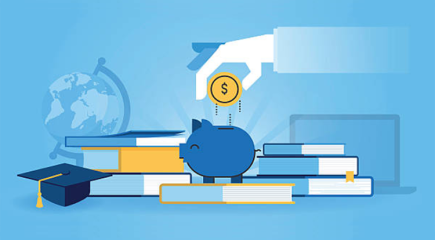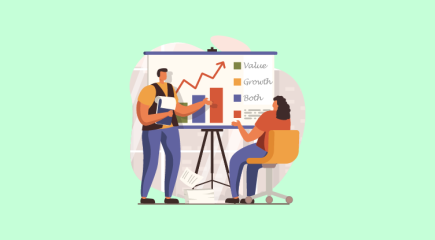Balance in investment portfolio needs both stocks and bonds, with the proportion between the two, depending on your age and risk susceptibility. Most financial advisors will suggest raising the proportion of bonds in your investment bag as you get closer to retirement. It is better to equalize the risk of a market crash wiping out your net worth. But the question is- what is a bond, and how does it act as an investment? Knowing how bonds work and how they should fit into your portfolio, irrespective of your age is essential. So, let’s dive deeper and learn more!
What is a Bond?
Bonds are all about the high-security debt instruments that allow an entity to raise capital and fulfill funds requirements. It is a kind of debt that borrowers can get from private investors for a particular tenure. Organizations, including businesses, governments, municipalities, and other entities, supply bonds for investors in primary markets. The aggregation thus collected is used to subsidize business operations and infrastructural expansion by corporations and governments.
Investors buy bonds at face value or principal, then get paid at the end of the tenure. Issuers extend a percentage of the principal value as periodical interest at fixed or flexible rates. Individual investors who own bonds have statutory and financial rights to an organization’s debt fund. Borrowers must pay the undivided face value of bonds to these individuals after the time expires. As a result, bondholders get debt recovery returns before stakeholders, in case a firm faces insolvency.
Bond Categories
There are four types of bonds traded in the markets:
- Corporate bonds: These bonds are announced by companies that seek funding, rather than using loan money from a bank, they circulate bonds. These bonds extend more favorable terms and lower interest rates for the firms.
- Municipal bonds: States and municipalities dispense these bonds. These bonds are tax-free, so investors keep all the income, paying no taxes.
- Government bonds: The administration issues these bonds. It is also known as sovereign debt. These are safe as they are under the rule of the government. These bonds usually have a low rate of interest.
- Agency bonds: Government-affiliated companies issue these this type of bond.
How Does a Bond work?
Bonds have three main elements on which it works. These are:
The first and foremost is the face value, also known as the par value. This is the amount that bondholders will get at maturity unless the issuer fails. Investors pay par when they purchase the bond at its initial face value. If the issuer eliminates bonds before maturity, bondholders may get the par value or a small premium. When buying in the secondary market, the value investors pay can be more or less than the face value.
The second pillar is the coupon rate, which is the yearly interest rate payable on the bond. The higher the bonds coupon rate, the greater the interest returns the owner gets. With fixed-rate bonds, the coupon rate is locked when the bond is issued and is non-replaceable. Most bonds offer interest payments semi-annually, although some bonds give monthly and quarterly installments.
The third important factor is that bonds have a said maturity date. Generally, this is the date on which the funds you’ve loaned the issuer will reimburse you.
Market Value of a Bond
The market value of a bond depends on many factors:
- The issuer’s loan quality – the credit evaluation of a company’s bond is defined by its credit rating. That company can have a high or low credit rating. Stable firms distribute very high-quality bonds, and they are called investment-grade bonds. If the credit status of the issuers is bad, then it raises the risk of the bond. These bonds and are named high yield or junk bonds. This type of bond will pay a higher interest rate due to increased uncertainty.
- Time until expiration – bonds with very lengthy expiration dates are deemed more dangerous. These bondholders will receive higher interest rates as the bond has a longer duration and subject to shifting inflation and interest rates.
- The coupon rate – will be compared to the prevailing interest rate when issuing the bond.
How to Calculate the Yield and the Bond Values
Many investors find it complicated when it comes to the bond values, and the return one can receive via bond investments. Several amateur investors will be shocked to learn that the bond prices vary day to day, just like any other publicly traded investable asset.
The yield is the returns one can anticipate from the investment they have made in bonds. The quickest way to calculate this is by applying the formula; yield is equal to the coupon amount divided by the price. When a bond is purchased at par value, the yield can be equivalent to the rate of interest. Thus, the yield fluctuates with the bond price.
Another yield that is usually measured by investors is the returns they receive upon the bond’s maturity. This is a more radical calculation that will give the total yield one can expect if the bond is retained until the date of maturity.
Bond Benefits
Bond investment has many advantages like:
- Bonds do not influence the authority of a company where equity financing does. Issuing bonds will not weaken company shares.
- Interest rates on a bond are tax-deductible meaning. It means though you are acquiring interest rates for financing the bonds, you can deduct the money from tax. Equity funding doesn’t give any tax advantages.
- It provides financial backing. When you offer a bond, the bond earns a return for you on equity. If a firm invests the bonds’ profits at a higher interest rate than the interest payments on the bond, the firm will get money on issuing the bond.
Who Should Invest in Bonds?
Although there is no particular time to invest in bonds due to predominantly harmonious interest cycles, risk-averse investors should think about bonds. Individuals are faced with many options while investing in bonds as per their economic inclination. Investors leaned towards safe debt instruments should acquire bonds from high-rated firms.
Additionally, investors who are ready to take market risks can find it financially profitable to acquire bonds from low-safety rated organizations for a higher interest rate on these fixed-income securities.
How to Avoid Trickery
Corporate bonds are assurance and, if publicly given, must be listed with the SEC. The listing of these securities can be checked using the SEC’s EDGAR system. Be careful of any person who tries to sell non-registered bonds.
Most municipal bonds issued after July 3, 1995, are obligated to file annual financial data, operating data, and reports of certain transactions with the Municipal Securities Rulemaking Board (MSRB). This report is available free of cost online. If the municipal bond is not registered with MSRB, this could be a red flag. So be aware and invest wisely!
Alternative to Bonds
For investors looking for an alternative to bonds, who want to play the market, but still keep their portfolios safe while earning income, options on dividend stocks are a great way to go. Here, investors can purchase high-yield dividend stocks for income, then sell upside covered calls against the stock they own. The call option’s sale provides additional income and hedges against a market downturn while still allowing the investor to participate in market rallies.
For more information on how this strategy works, sign up for free membership at OptionStrategiesInsider.com and pick up our free book on dividend stocks.




